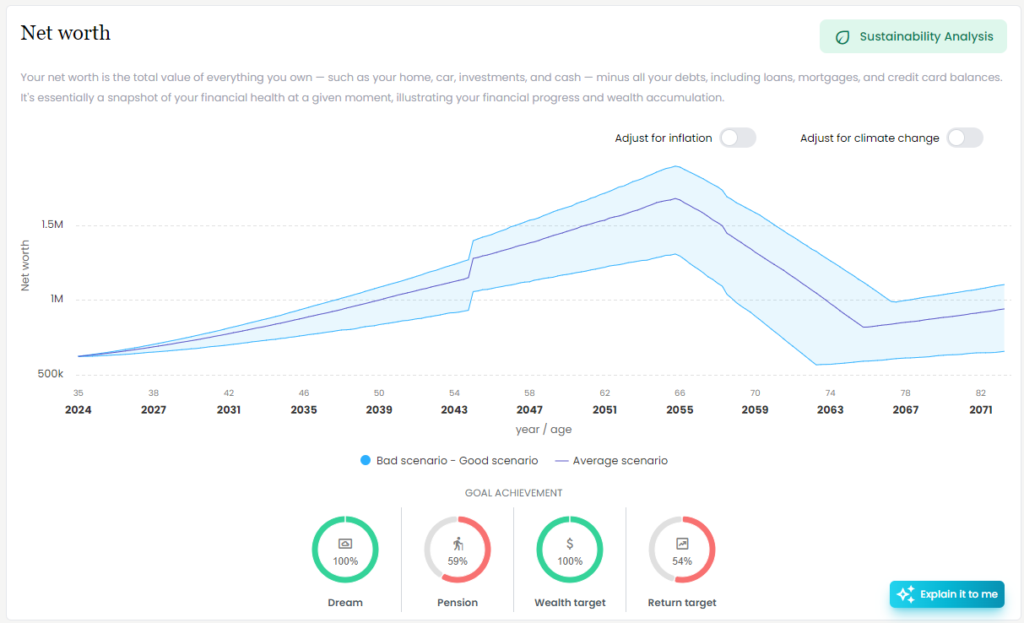The classical advisory approach based on the risk profiling required by regulators hardly creates tangible value for private clients.
Few clients consider their financial goals when answering the risk profiling questionnaire. Hence, this is often an artificial and out-of-context exercise, even if optimised from a behavioural perspective. Further, clients who consider their financial goals when answering this questionnaire do not get any transparency about the likelihood of achieving their goals. This often leads to the selection of a suboptimal investment strategy and subsequent disappointment with the investment performance:
The individual willingness to take risk depends on the likelihood to achieve the financial goals. Clients are normally willing to take more risk if they increase this likelihood and vice versa, clients who have enough wealth to achieve all their goals even in adverse market conditions , wish to reduce their risk accordingly.
Thus, we are convinced that goal-based advice should form the basis for any advisory process. What are the main prerequisites for an effective goal-based advisory solution?
1. Holistic Wealth Assessment
An incomplete view on the clients’ assets (e.g. 3rd-party holdings, art, etc.) leads to a portfolio with too much risk, as these assets could also be used to increase the goal achievement. Hence, it is crucial that the advisor gets a complete overview of the client’s wealth to deliver the best possible advise. This can only be achieved if the advisor can demonstrate this to the client and if the client perceives added-value in the disclosure of the whole financial situation during the client meeting.
This enables the bank to finally act as the trusted advisor, advising the client holistically (e.g. also on 3rd-party assets), resulting in asset inflows and a higher cross-and upselling ratio!
2. Long time periods
The expected life time of the client determines the investment horizon which, as a result, is normally above 10 years. In this case, determining an asset allocation based on Markowitz or Black-Litterman models is not meaningful: a more complex logic needs to be applied, overcoming the assumption of the same return over all periods. Which bank today assumes that negative interest rates are here to stay over the next 20 years?
3. Inflation, fees and taxes
For simplification reasons, let’s ignore the taxes and consider the impact of inflation and fees only. The average S&P 500 return from 1998-2017 was 7.17% (CAGR, incl. dividends). If we assume a fee of 1% and deduct effective inflation, CAGR incl. dividends was at 3.92%. Hence, an investment of EUR 500’000 in 1998 would have resulted in EUR 1.3m after 20 years and not EUR 2.8m as calculated without inflation and fees. If that difference is not accounted for, clients will be misadvised and not achieve their goals.
All the above points represent what we believe in: accurate simulations.









